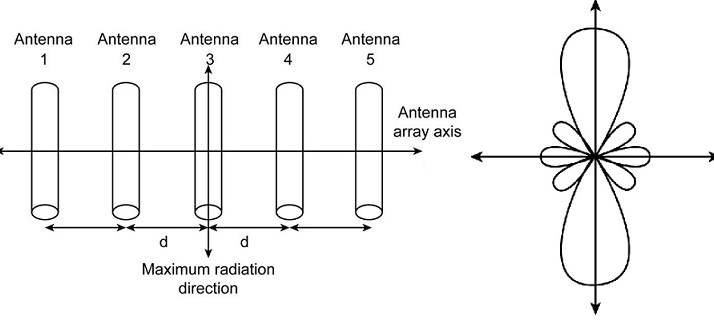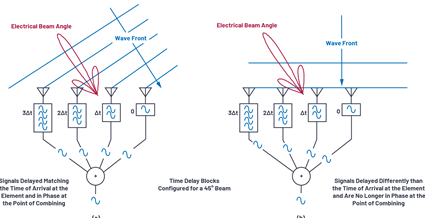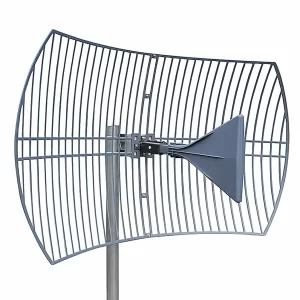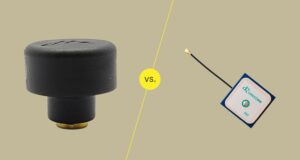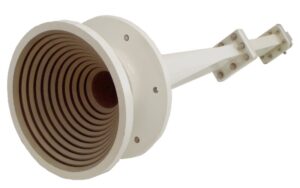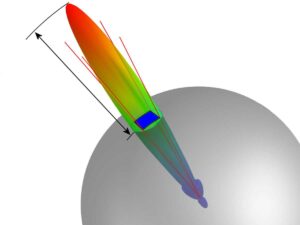Table of Contents
Physical Structure Differences
An array is composed of multiple antennas combined together to act as a single entity . The physical structure of an array is created by the configuration and the number of antennas that it has. In applications, no two array structures are the same and can vary dramatically. Each element of an array can differ or not from other antennas. As a rule, elements are spaced at certain intervals to regulate the phase and amplitude of the emitted or received signal. This configuration helps to enhance the ability of the array to shape the radiation pattern, which is often targeted for specific directional patterns of waves.
In contrast, an antenna consists of only one radiating element, which transmits or receives electromagnetic waves. For example, an antenna is used to transmit or receive TV signals, which is a single element, versus the airport array of antennas, which is a more complicated configuration compared to a single antenna . Almost all antennas are rods, loops, or wires placed in space. There are two structures of an antenna transduce and transform a signal. The former is common in isotropic antennas while the latter can be applied in circumstances when anisotropy occurs. Another significant difference is the lack of a complex configuration and the presence of only one element in most antennas.
Difference
Based on the aforementioned comparison, it can be concluded that while an array is usually more complex and consists of many other antennas or elements, a single antenna is simpler and contains one antenna. Most of the time, they also differ in cost, where a single unit is cheaper than an array but provides limited coverage. It is more suitable for use in applications that do not require the control of signal direction and need more general coverage.For the more complex configuration and better control of the signal direction of the array, users may need to pay more for the device.
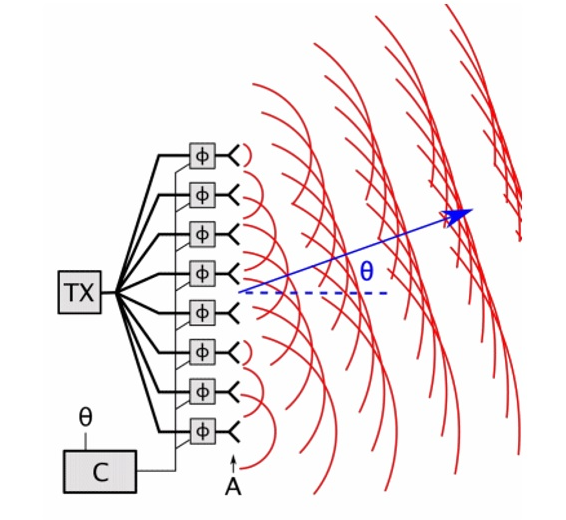
Types of Arrays and Antennas
-
Recognition: Common types of arrays: Arrays may be classified based on the configuration and the method of manipulating the beam. Phased arrays and adaptive arrays are common types. Phased arrays use multiple antennas to steer the direction of the beam electronically. They do this by controlling the relative phase of the signal at each radiator, and, because of no mechanical steering requirements, the direction of the beam can be rapidly changed. Phased arrays are effective in radar systems because of the speed and precision. On the other hand, adaptive arrays adjust their characteristics based on the signal environment to increase the signal-to-noise ratio . They are useful in high noise environments such as urban settings. Common types of antennas: Antennas vary and are suitable for different tasks depending on the radiation pattern, frequency range, and power handling capacity. Dipole antennas are basic and popular across all types of antennas because of their simplicity and suitability for a wide range of frequencies. Yagi-Uda antennas are also common because of their high gain, and they are well adapted for television reception over long distances. The parabolic antenna is also popular, using its parabolic reflector to concentrate the radio waves. It is common in satellite dishes and some radar dishes. The antenna is suitable for long-distance satellite communication use because of the high power efficiency and narrow beamwidth, making them ideal for less signal loss in transmission.
-
Key parameters and performance
Phased array beam steering
-
{ Phased arrays can have 100 elements, each of which can change the pattern slightly. The array can then track a moving target or switch rapidly between multiple targets.
Yagi-Uda bandwidth and gain
-
Yagi-Uda is characterized by a high gain of 10-15 dB with a bandwidth of 10% of the center frequency. As a result, it is suitable for fixed-frequency applications such as broadcast or amateur radio.
Installation costs: Large arrays, such as phased arrays, are expensive and costly in terms of technology used to implement their control. Depending on the size if array, and the sophistication of its electronics, a phased array system might cost a few thousand, or tens of thousands of dollars. On the other hand, simple antennas, such as the dipole and Yagi-Uda, are cheap, with costs ranging from a few dollars to few hundred dollars.
Situations Favoring Arrays
Radar Systems
In radar systems, especially in military and civil aviation, array antennas, and particularly phased arrays, are extremely useful because the beam can be quickly steered across a wide area without the physical movement of the antenna. The key factor in radar technology is the ability to change the beam direction electronically within milliseconds, thus improving the radar’s ability to track fast-moving objects. Modern air traffic control radars can calculate the speed of the aircraft and adjust the beam direction virtually instantly – improving both safety and traffic management efficiency.
Telecommunications
In telecommunications, especially in cellular networks, adaptive arrays are used to improve the quality of the signal and the use of bandwidth. The arrays change their beam patterns to maximize the strength of the signal received from mobile phones and minimize the effect of other sources. This is important, especially in urban areas, where buildings block and reflect signals. An adaptive array can drastically improve the area covered by the transmitter and the quality of the signal – which is very important, especially in densely populated urban areas. adaptive arrays are useful in communication between spacecraft as well.
Broadcasting Generally, broadcasting applications benefit significantly from the use of antennas, as arrays can broadcast signals over vast distances with minimum loss of signal strength. The gain and directivity provided by the array are vital, especially in television and radio broadcasting. The antenna arrays, particularly the log-periodic antennas, are useful in providing the necessary gain and directivity because they can broadcast signals over a much wider area with no loss of signal strength in the longer ranges. The gain provided by the array helps in retaining the quality of the signal over vast distances a single antenna cannot cover with the same precision.
Phased Array Response Time: Phased arrays can have a response time as low as a few microseconds to a few milliseconds, depending on the system design – this is particularly useful in radars, especially in air traffic control.
Adaptive Array SNR Improvement: Up to 10-20 dB improvement in SNR adaptation arrays – this can be very helpful in all communication applications.
Situations Favoring Antennas
Individual Consumer Use
Generally, simple antennas are more practical and cost-effective for an individual consumer’s everyday uses. For example, dipole or monopole antennas may be used for radio reception regularly, or amateur radio operators may use a simple dipole array. In terms of common uses, such as television reception, single antennas such as a Yagi or log-periodic design is more practical. These uses do not require the complexity, cost, and space required for large arrays. Additionally, the single antenna is inexpensive and easy to install, which is important for personal use. For common uses, such as the example of a dipole array, the cost of the antenna is only a few dollars.
Portable Devices
In portable devices, the use of a single-element, simple, compact, and relatively small design is beneficial. For example, an antenna is in smartphones, personal GPS units, and portable radios. The first design consideration of these antennas is size, as the antenna must be able to operate efficiently with a very small power source. Importantly, the efficiency of the antenna is also crucial, as the device must operate within agreed-upon limits while using a minimal amount of power. Power efficiency is generally a consideration for all devices that use antennas, but minimally-sized transmitters must be able to transmit and receive communications with limited power requirements. These portable devices are likely to use a helix or similar compact, resistant design in an attempt to achieve the most efficient solution for its small size. The total system efficiency would still be fairly low, probably around 50-70%.
Remote Locations
For remote locations, where the cost and complexity of an array are not necessary or feasible, single antennas are also more practical. Often, the basic permanent single antenna is still correlated, such as a Yagi. In general, single antennas are also inexpensive, and the cost of manufacturing them does not make them more costly than the average center of a simple array. In remote or particularly service-challenging locations, a Yagi antenna should improve television reception over a fairly large fractal area. The exceedingly high gain would not be necessary and might be a poor value in terms of cost and design complexity. Instead, the gain of the simple Yagi should probably be on the order of 12-15 dB. A simple Yagi is not likely to be an extremely costly purchase, even given the remote location, so a price range of $10-$20 to $50-$100 is most likely.

